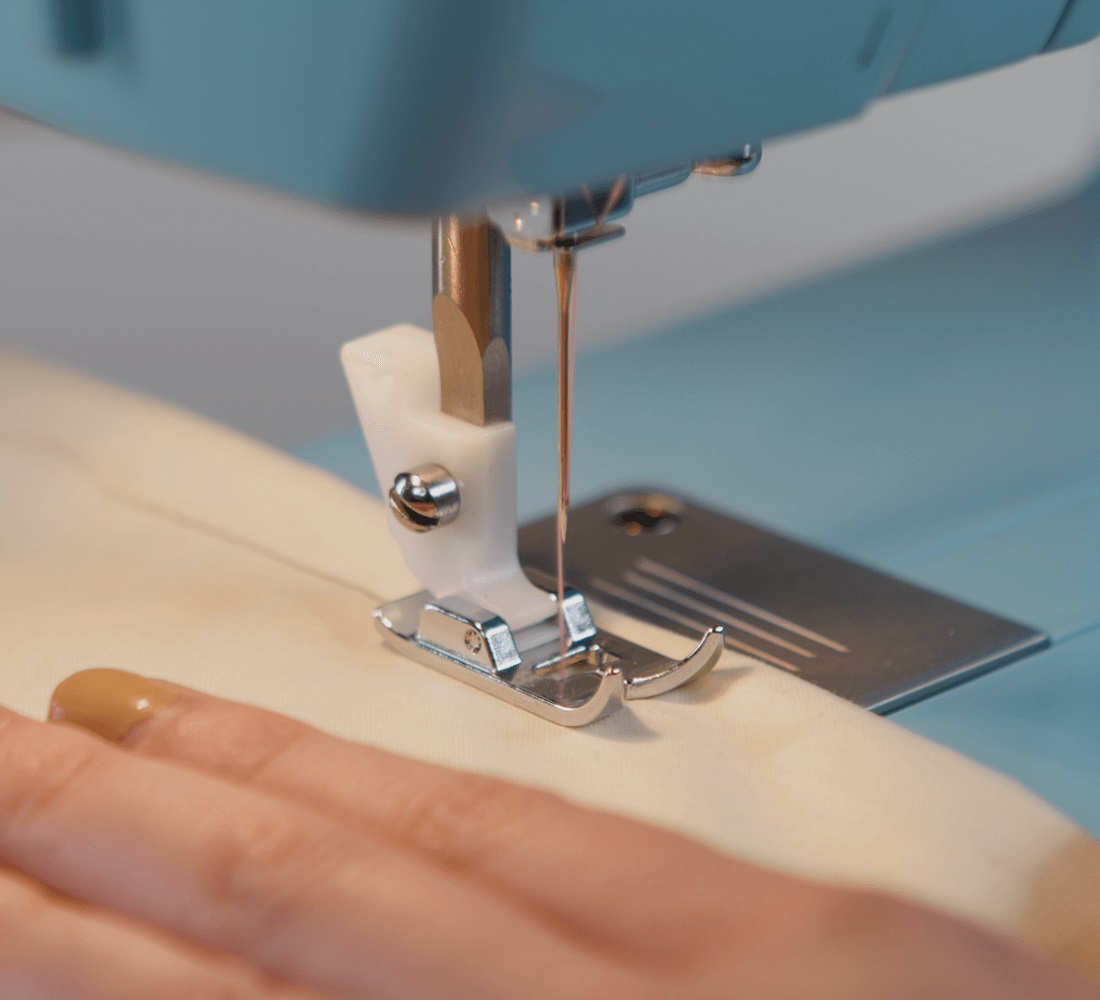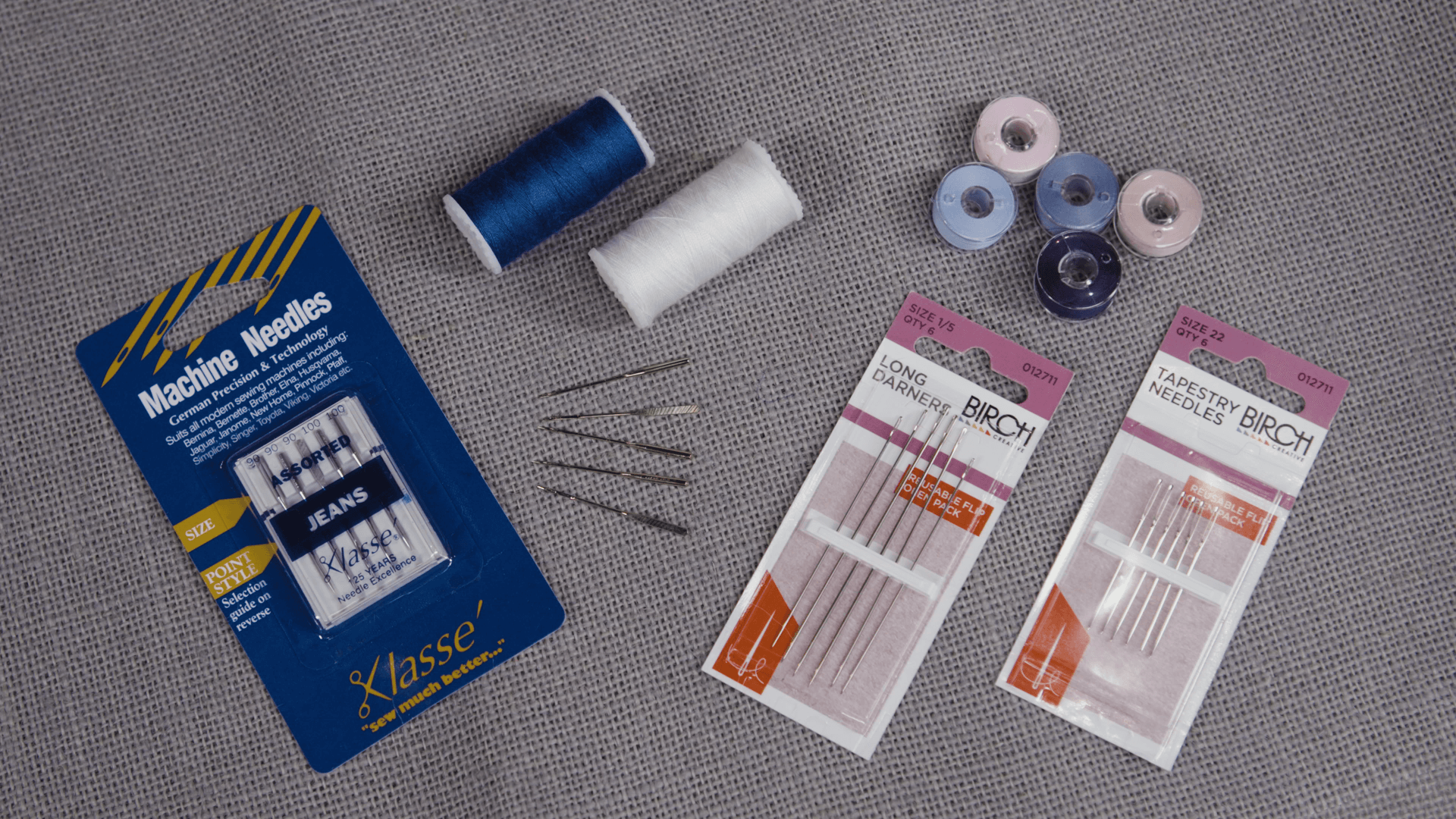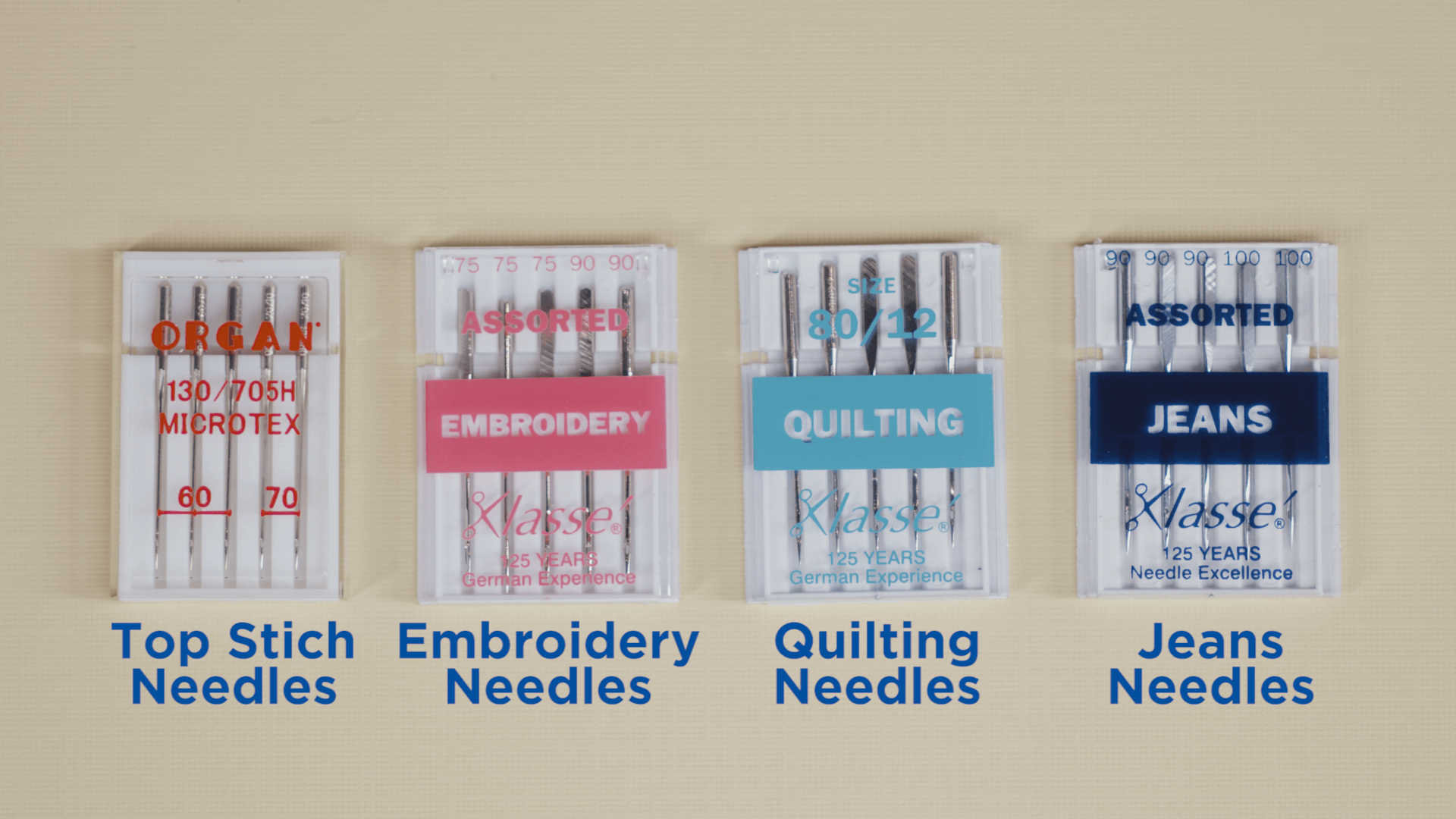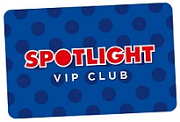 | ||
| Your browser is not supported. | ||
|
Please browse our site using any of the following options:
| ||
How to choose the right needle?
Whether you're doing intricate embroidery, or just sewing on a button, a sewist's most important tool is their needle. Here's how to choose the right one for any job.
Needle Shape
A needle's 'shape' refers to the shape of it's point. Some needles are sharply pointed while others have a somewhat rounded end, and each is designed to work with a different range of fabrics.
- Microtex sharp needle
- As the name suggests these have a very sharp point.
- They are designed for use with woven fabrics.
- Perfect for tasks like top stitching and quilting where precision is important.
- Microtex sharps in small sizes work well on lightweight, tightly woven fabrics.
- These needles require a fine thread as they have small eyes and create delicate stitches.
- Universal needle
- Universal needles are the most versatile needle available.
- They have a slightly rounded tip, meaning they readily pierce woven fabrics, and can work with some knits.
- Jersey or ball point needle
- Ball point needles are designed for use with knit fabrics which can develop holes and unravel if their threads are severed or damaged.
- Their rounded point allows them to pass between the fabric fibres without breaking them.
- Stretch needle
- A type of ball point needle with a specially designed eye and scarf.
- Ideal for use with very stretchy fabrics such as lycra and spandex.
- Specialty needles
- There are a range of specialty needles available or use with unusual fabrics or for specific sewing tasks. For example, wedge point needles have a cutting point that pierces thick non-woven fabric like leather and other non-woven synthetics.

Needle Size
The size of a needle is determined by its diameter right above the eye.
- Needle size is always denoted by two numbers printed on the packaging. One is the U.S. size, and the other is the European.
- The larger the number, the larger the needle.
- An 80/12 or 90/14 needle will work well for most everyday sewing projects.
- Larger needles are stronger, so they will stitch through thicker fabrics or multiple layers without breaking or bending.
- Smaller needles stitch through delicate fabrics without creating holes or causing damage.
- It is important to match your thread size to your needle as well. For example, small needles have small eyes and need fine thread to go through them.
U.S. | European | Diameter | Example fabrics* |
8 | 60 | 0.6mm | Sheer fabrics, organza, light silks, microfibre, voile, taffeta |
9 | 65 | 0.65mm | |
10 | 70 | 0.7mm | Cotton lawn, light lycra, spandex, jersey |
11 | 75 | 0.75mm | |
12 | 80 | 0.8mm | Quilting cotton, poplin, rayon, linen, chintz, calico, shirting, velvet, terry, polar fleece, corduroy |
14 | 90 | 0.9mm | |
16 | 100 | 1mm | Denim, vinyl, upholstery fabric, canvas, damask, tweed, gabardine, ticking |
18 | 110 | 1.1mm | |
20 | 120 | 1.2mm |
*These examples should be used as a guide. There is a good deal of variation in weight and weave in all types of fabric - make sure you test your needles on your chosen fabric before beginning a project.
It's also important to note that needles only perform at their best for 6 to 8 hours of sewing time. A good rule of thumb is to replace your needle between each sewing project.

Hand Sewing Needles
Just like machine needles, hand sewing needles vary in both size and shape, and choosing the right one for your project is important.
Needle Type
While there are many specialist needles available, the following are the ones you're likely to look for for most crafts:
- Sharps
- As their name suggests, these needles are noted for their sharp points.
- They're considered the 'workhorse' needles, because they can be used for almost any everyday sewing project.
- Betweens and quilting needles
- These are just like sharps, but are shorter.
- They are ideal for making quick, accurate stitches, and for sewing through multiple layers of fabric.
- Ball point needles
- These needles have rounded, blunted ends.
- Ideal for use with knits as they are designed to pass between the fibres of the fabric without damaging them and causing holes.
- Milliners or straw needles
- Long and thin with a small eye that is no wider than the shaft of the needle.
- Traditionally used by milliners to make hats and bonnets.
- These needles are also used for basting, creating pleats, and for smocking, because their length makes the process quicker and neater.
- Beading needles
- These needles are very long and thin.
- They are designed for hand sewing beads or sequins onto fabric, and are also used in other beading and jewellery making crafts.
- Embroidery needles
- Embroidery needles are similar to sharps, but they have a bigger eye so that they can be threaded with multiple strands of embroidery floss or thread.
- They come in a range of lengths.
- Darning needles
- These are repair needles, used for mending holes in fabric.
- They are long and have large eyes for threading yarns and thicker threads.
- Different sized darning needles are useful for mending different fabrics, for example a cotton darner is smaller than a yarn darner.
- Tapestry needles
- Large blunt needles with large eyes for threading tapestry wool through.
- Ideal for decorative stitching on loosely woven fabrics.
- Upholstery needles
- Heavy duty needles for use with upholstery fabric.
- Can be either straight or curved, and should be chosen based on the shapes and angles you'll be working around on your project.

Needle Size
- Needles are generally given a size number, with a smaller number indicating a larger size.
- There are different size scales for each type of needle. For example, a size 14 darning needle will be different to a size 14 embroidery needle. If you're working from a pattern, check it to see if there's a size recommendation, otherwise test a couple of sizes out to see what works best for your project.
- Remember to use smaller needles with delicate fabric so they don't leave holes and cause damage.
- Use larger, more robust needles with thicker fabric so they don't bend or break.
Useful Additions
When you're going to be hand stitching there are a couple of accessories that can make the process easier and more comfortable.
- Pin cushion or needle keeper
- This will help you keep track of your needles so they don't get lost.
- Needle threader
- These are simple little tools that make threading your needles much easier. Particularly useful of you're working with needles that have very small eyes, or if you have poor eyesight or unsteady hands.
- Thimble
- To protect your fingers from being pricked as you sew.
Want to look at more Sewing & Quilting options?
Check out Spotlight's range of sewing & fabric ideas online, visit your local store or contact one of our experts for assistance.




